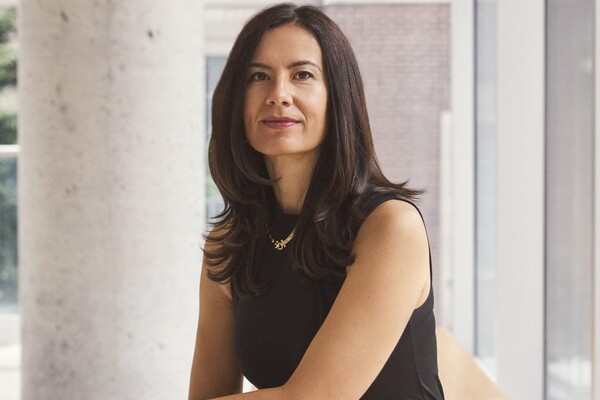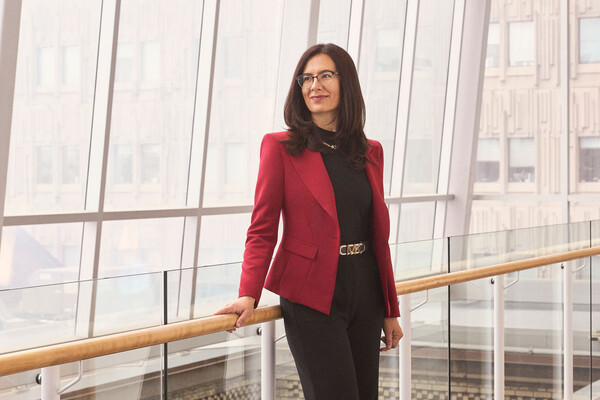Main Second Level Navigation
Rafael Montenegro-Burke Wins Connaught Award for Research in Metabolomics

Moving to a new country to start a lab is daunting at the best of times but doing so in the pandemic poses its own challenges, as U of T Professor Rafael Montenegro-Burke found out.
First there was the long-winded road trip he took with his wife and two dogs from their previous home in San Diego while waiting for a work permit to cross the border. The journey was “like something out of an apocalypse movie” as they sought to protect themselves from the virus, from avoiding contact with strangers to eating drive-thru meals to wiping clean a different hotel room each night.
And while he is yet to experience Toronto at its normal, he did not let the pandemic derail his research plans.
Montenegro-Burke joined the Donnelly Centre for Cellular and Biomolecular Research as a principal investigator in fall of 2020 and built a research program in metabolomics — an emerging field that draws on molecular biology, engineering, computer science and other areas to illuminate metabolites, which are small chemical compounds produced by the body that influence health and disease.
Mapping out metabolites is a mammoth task considering that humans produce an estimated one million distinct chemicals, only a fraction of which have even been detected.
“The biggest challenge in metabolomics research is that we know there are many more compounds than we can detect,” says Montenegro-Burke who is also an assistant professor of molecular genetics in U of T’s Temerty Faculty of Medicine.
“And these one million metabolites are produced only by human cells. That’s not including the metabolites produced by the hundreds of species of bacteria in the gut microbiome, for example.”
The term “metabolome” is used to describe a complete set of lipids, sugars, amino-acids and other small molecules produced in enzymatic reactions. They come in a variety of shapes with the potential to interact with a wide range of cellular components and to regulate essentially all bioprocesses. Scientists like Montenegro-Burke believe that this vast and untapped chemical diversity holds clues to how the body works when it is healthy and what goes wrong in disease.
The complexity of the metabolic machinery is just so big that we cannot even give it a number. And that’s exciting, it keeps us busyAssistant Professor Rafael Montenegro-Burke
Now his research has received a boost from U of T’s Connaught New Researcher program, which provides support for new faculty members at the start of their careers. The funding will go towards developing new chemistry approaches for the identification of scarce lipid molecules that have been linked to inflammation in the gut known as irritable bowel syndrome.
He has also won the Evans Leaders Award from the Canadian Foundation for Innovation which will allow him to obtain a state-of-the-art mass spectrometry instrument for the detection of small molecules in cells and tissue samples.
A chemist by training, the native Guatemalan has always preferred “taking precise measurements using instruments to beakers and solutions.” After receiving his undergraduate degree in chemistry and chemical engineering at the Graz University of Technology in Austria, he went to the U.S. for a PhD in metabolomics and mass spectrometry at Vanderbilt University. From there he moved to the Scripps Research Institute near San Diego where he began to develop computational algorithms for the analysis of mass spectrometry data which is one of his group’s main interests.
But the ultimate goal of developing new technology is to use it to answer biological questions, Montenegro-Burke said.
Questions such as: are the individual blood stem cells metabolically different and how does this affect their ability to give birth to all the different cell types in the blood? He is collaborating on the project with Stephanie Xie and John Dick’s group at the Princess Margaret Cancer Centre, and with Aaron Wheeler, a professor of chemistry in the Donnelly Centre, with whom he is developing a miniaturized platform based on the microfluidics technology for the analysis of individual stem cells.
He’s also working with Dr. Sheila Singh’s group at McMaster University to identify metabolic differences between healthy brain stem cells and those driving medulloblastoma, a type of brain cancer, that could be exploited to selectively destroy the cancer cells.
In addition to the human metabolome, Montenegro-Burke is also working to shed light on the metabolic diversity across the tree of life. He has teamed with groups working with bacteria, yeast, flies, worms and mammalian cells to try to piece a picture of chemical diversity in all these different research models. By integrating the metabolome data with various other data, including gene and protein expression data, as well as the effects of mutations, it should be possible to untangle what some metabolites do and how they are made.
With so much waiting to be discovered, no wonder he has a multitude of projects on the go.
“The complexity of the metabolic machinery is just so big that we cannot even give it a number,” he says.
“And that’s exciting, it keeps us busy.”
Follow us on LinkedIn and Twitter to keep up with Donnelly Centre news.
News



